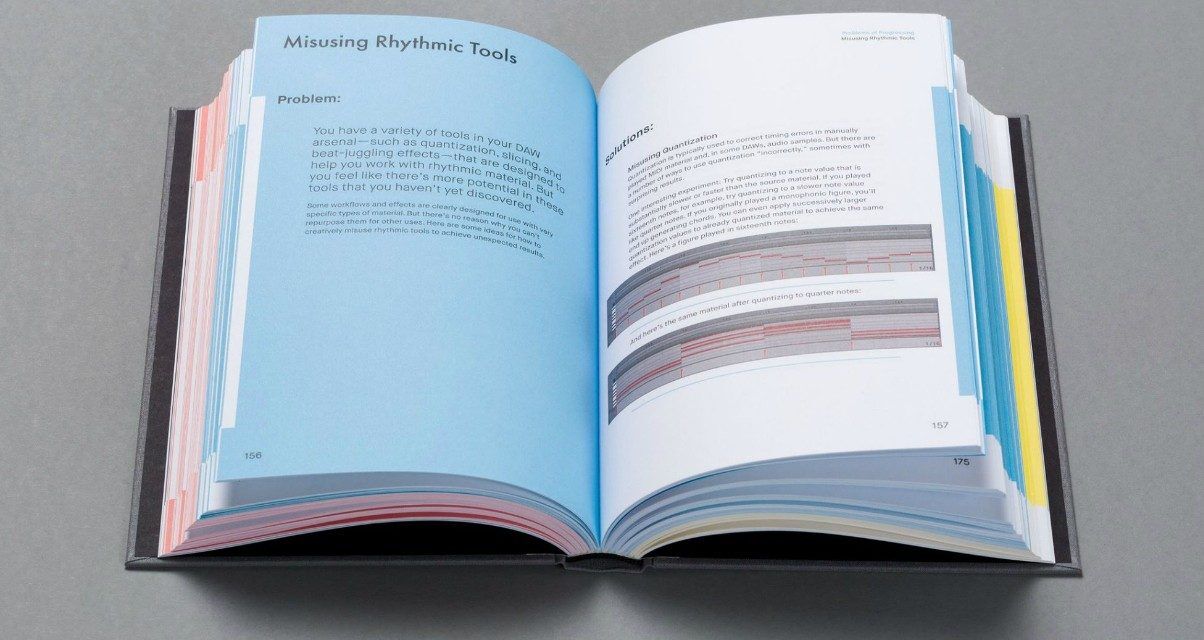The Lowdown
If you’re a DJ looking to get started in music production, you’ll find a lot of information here on how to get on with it, but don’t expect to find any DAW-specific tips: It’s a book on how to make music, not how to use the tools needed to make it. It’s a good companion guide, and you’ll find yourself grabbing it time and time again because no matter how good you get in the production game, you’re bound to get stuck at one point.
Video Review
First Impressions / Setting up
Full Making Music Book Review
The latest product from the makers of Ableton Live isn’t an app or a new hardware controller; it’s a book. It’s called Making Music: 74 Creative Strategies For Electronic Music Producers, and it’s written by Ableton documentation head Dennis DeSantis who’s an accomplished composer and sound designer himself.
In this review, we go through the book and tell you what it’s all about…
What is it?
Even though it’s a book about electronic music production made by the company that created one of the world’s most popular digital audio workstations today, it’s not a how-to book on creating the perfect kick drum, or how to adjust settings on a compressor, or even how to get started with Ableton Live.
Making Music isn’t about the “technical” aspects of production, rather, it’s about the “music” side of it. Think of it as a reference whenever you’re stuck in a creative rut as you go through process of writing music regardless of what software or synths you’re using. It’s a book on how to make music, not how to use the tools needed to make it.
The book deals with both practical and theoretical approaches to getting over the many hurdles you’ll encounter in your music production journey, and can be applied to all types and genres of music, although there is a focus on working with computers / machines, which is the realm of the music producer, as opposed to working with other people in a group, which tends to be the case with bands.
A look inside
The book is structured this way: Problems related to topics in producing music are presented (eg Procrastination and Timeboxing, Listening to Music You Hate, etc), and solutions to those problems are then given.
Reading these solutions aren’t enough, though, and you are encouraged to tackle these problems through the various action steps provided. This is what makes the book so powerful: You’re not just going through pages and pages of theoretical suggestions, you’re actually going through plans of action that give you real world results.
The topics in this book are divided into three parts: Problems of Beginning, which deals with roadblocks you encounter as you start to write your piece, Problems of Progressing, which are things that hinder you from getting to the end of your music producing, and Problems of Finishing, which handles topics that help you arrive at an end point for your tunes. All in all, this book has got you covered from starting your song all the way to ending it.
Conclusion
So is this something you should read? If you’re a DJ looking to get started in music production, you’ll find a lot of information here on how to get on with it, but don’t expect to find any DAW-specific tips like how to use a drum machine, or how to mix and master dance music, or how to play the piano (although there’s a portion about chord structure and intervals). As the book states in the introduction, there are already a ton of titles on these topics, and this book assumes that you at least have a very basic understanding of how DAWs work.
This is an excellent companion guide to the entire production process, and should be treated as an essential part of your collection of production books, not the end-all-be-all. This isn’t the holy grail that’ll catapult you to the top of the Beatport charts (or any chart, for that matter), but this is one of those books that’ll really help you approach your process differently by helping you think about other ways to go about it.
While there are other books that you should be reading if you’re a first timer in the production world (Dance Music Manual and The Music Producer’s Survival Guide come to mind), I wouldn’t hesitate to order a copy of this because many of the issues you’ll be facing when you first start producing music are tackled brilliantly here, such as what to do when faced with an empty DAW screen upon first launch.
Bottomline: You should have this on your home studio’s bookshelf because you’ll find yourself grabbing it time and time again because no matter how good you get in the production game, you’re bound to get stuck at one point.


